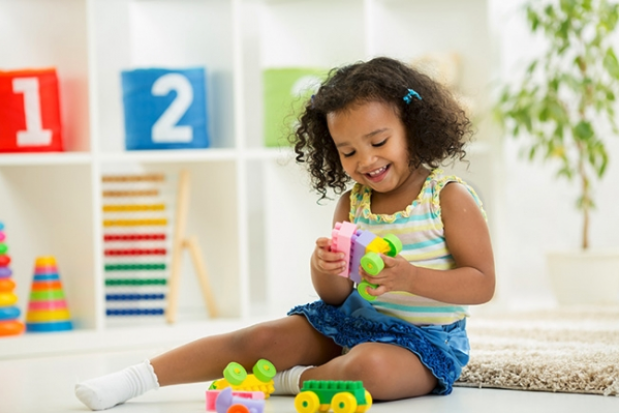Understanding IEP Goals
Kristin Park, MS CCC-SLP A while ago, I wrote a blog post about

By: admin | November 13, 2019
Toys for Speech and Language Enrichment
Kristin Park, MS, CCC-SLP
With the holidays right around the corner, many parents are starting to feel the pressure of finding the “perfect” toys for their children. When browsing the toy aisles at the store, there are SO many options. It’s hard to know what’s going to be interesting to a young child for more than five minutes, what won’t fall apart, or what will get that “wow” factor when your little one opens it up. Often parents will ask their child’s speech therapist for recommendations on “educational” toys. This blog aims to guide parents in their purchasing decisions this holiday season. Sources for this blog are posted at the end.
Remember the acronym C.A.P.
A simple tool for analyzing the value of toys is the acronym C.A.P. – the toy should allow the child to be Creative, be Active, and to Pretend. Rather than focusing on what the TOY can do, focus on what your CHILD can do with the toy. The interaction between the child and the toy is perhaps the most important aspect to consider when purchasing a toy. This is what allows your child to engage, communicate, and be involved.
Toys that do nothing are the best!
Think about it this way… if the toy doesn’t do anything, then it’s up to the child to do everything. Your child can make the toy “talk”, build it to look like whatever he wants, move it in various positions, stack it up or knock it down, etc. No batteries, no second languages, no flashing lights, no automated directions to follow, no lengthy songs that play without rhyme or reason. Remember, instead of asking “what does this toy do?” ask yourself “what can my CHILD do with this toy?”
10 Guidelines for toy selection
Still on the fence about the toys in your shopping cart? In a blog from www.friendshipcircle.org, Speech Pathologist Katie Yeh suggests 10 tips for selecting toys for speech-delayed children:
“What set the highest-scoring toys apart was that they prompted problem solving, social interaction, and creative expression in both boys and girls. Interestingly, toys that have traditionally been viewed as male oriented—construction toys and toy vehicles, for example—elicited the highest quality play among girls. So, try to set aside previous conceptions about what inspires male and female play and objectively observe toy effects to be sure boys and girls equally benefit from play materials.”
Last but not least – A list of suggestions
Using the criteria and advice above, it should be a bit easier to think critically about the toys we select for our children. To make things even easier, here is a non-exhaustive list of toys and gifts that make the cut for helping babies and toddlers with speech and language development:

The best thing about playing is that there are no rules! Follow your child’s lead in play and who knows where their imagination will lead you! And remember… let your child have FUN!
Sources
“Best Toys and Gifts: a Speech Therapist's List!” Let's Play: the Speech and Language Way, 16 July 2019, https://letsplaythespeechandlanguageway.com/2016/11/18/best-toys-speech/.
“Toys That Do Nothing.” Let's Play: the Speech and Language Way, 12 Oct. 2018, https://letsplaythespeechandlanguageway.com/2018/08/29/do-nothing-toys-speech/.
Yeh, Katie. “10 Tips for Selecting Toys for Your Speech Delayed Child – Friendship Circle – Special Needs Blog.” Friendship Circle — Special Needs Blog, 29 Oct. 2017, https://www.friendshipcircle.org/blog/2013/06/25/10-tips-for-selecting-toys-for-your-speech-delayed-child/.
“National Association for the Education of Young Children.” NAEYC, https://www.naeyc.org/.

Kristin Park, MS CCC-SLP A while ago, I wrote a blog post about
By: admin | January 19, 2022
